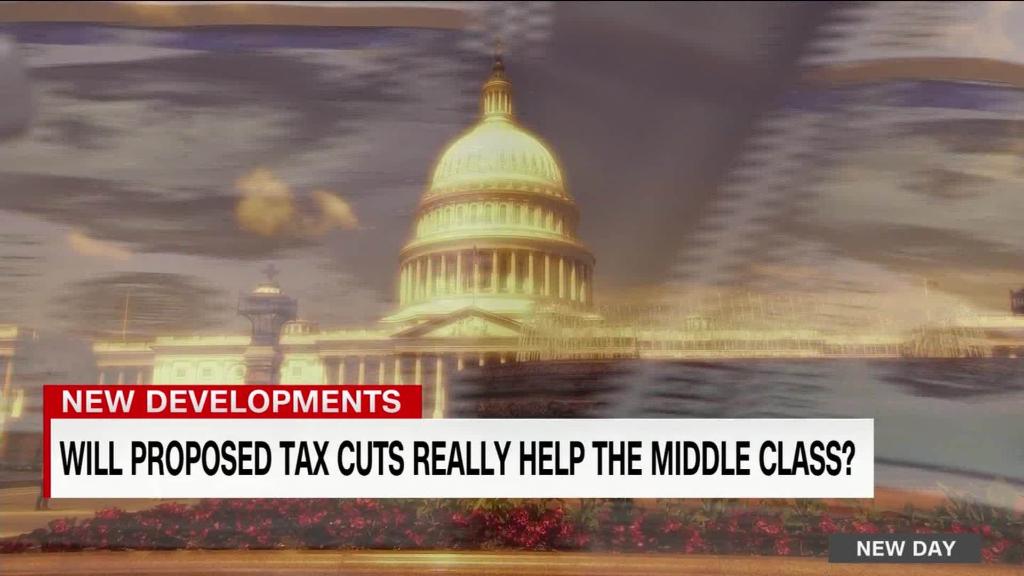
President Trump on Wednesday made what the White House billed as his "closing argument" for the Republican tax plan making its way through Congress. His main argument: The proposals will result in a "giant tax cut" for the middle class.
"We want to give you ... a giant tax cut for Christmas and when I say 'giant' I mean giant," Trump said.
The final bill is still being worked out. But based on what is known of the House and Senate tax bills that are currently being merged, the president is overstating it when he describes middle class tax cuts as "giant."
Here's some context on the cuts in store for middle-income households based on nonpartisan analyses of the Senate-passed bill:
Modest increases: Those in the middle class would see tax cuts, on average, especially in the first half of the next decade. But they would be modest -- with an average increase below 2% in after-tax income. By contrast, higher income households would see an average bump in after-tax income north of 2%, according to the Tax Policy Center.
But an "average" tax cut doesn't mean everyone would get one. Some might pay more. And some might see a much bigger tax cut than the group average. Everything depends on individual circumstance: marital status, family size, how you make your living, what deductions you normally take, etc.
Short shelf-life: For many middle-income groups, their tax cuts diminish if not disappear completely by the end of the decade, since individual tax cuts and other benefits would expire after 2025.
Related: Will Trump's tax plan really give you a $4,000 raise?
Higher debt: The bill would increase the nation's debt by more than $1 trillion in the first decade. Given the fiscal challenges of the federal budget in the next few decades, increases to the debt will create the need for future tax increases, spending cuts or some combination of the two. So it's likely the middle class would be the subject of either or both to pay for today's tax cuts.
Optimistic assumptions about worker benefits: Republicans have also been pitching the idea that the steep corporate tax cuts in the GOP tax plan would be a boon for workers in terms of higher wages and increased jobs.
The president's Council of Economic Advisers even estimated a corporate rate cut to 20% might increase average household income by at least $4,000. But that's based on the most optimistic assumptions: that companies will use their tax savings to invest in their businesses rather than use it to pay higher dividends or buy back company shares.
It also assumes a very high percentage of a corporate rate cut benefits workers directly. Many mainstream economists believe the direct benefits are more modest and take a longer time to take effect.


